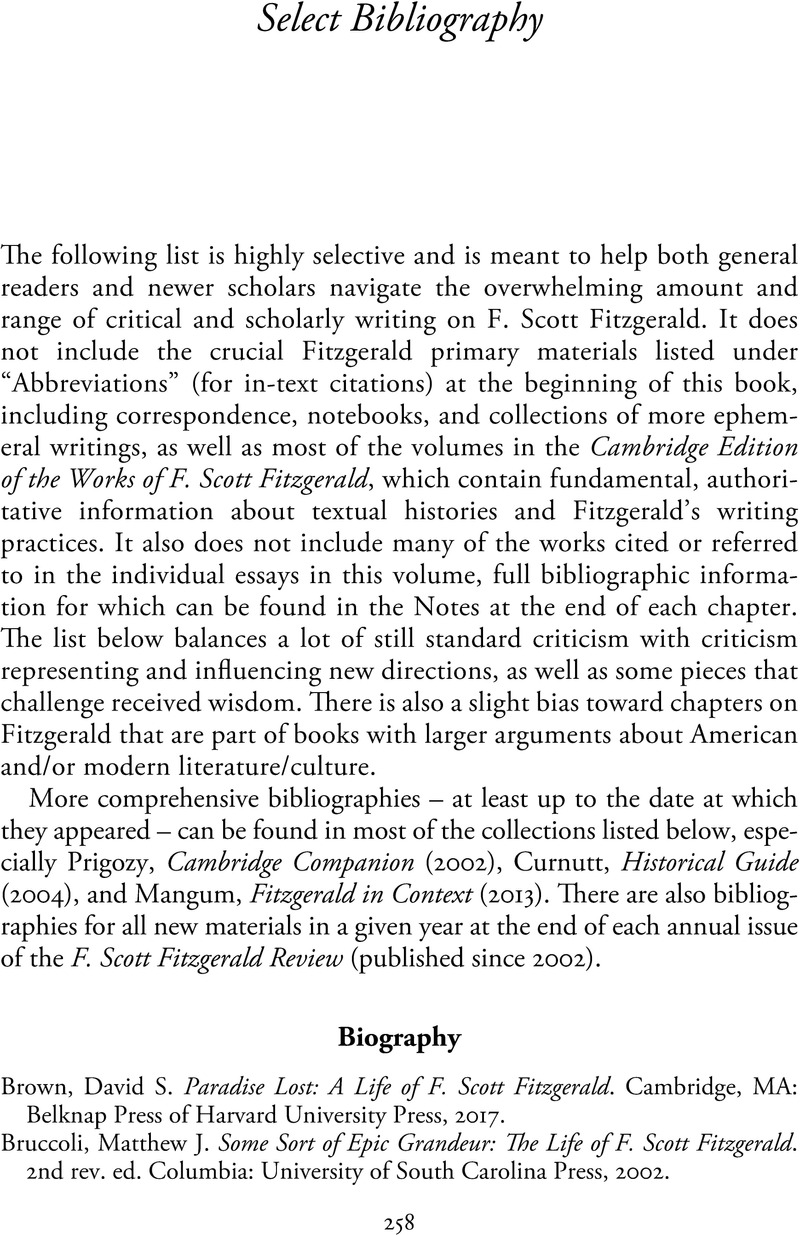Book contents
- The Cambridge Companion to F. Scott Fitzgerald
- Cambridge Companions To Literature
- The Cambridge Companion to F. Scott Fitzgerald
- Copyright page
- Dedication
- Contents
- Figures
- Contributors
- Chronology
- Abbreviations
- Introduction
- Chapter 1 Youth, Maturation, and Adult Sexuality
- Chapter 2 The Beautiful and Damned and Literary Decadence
- Chapter 3 The Short Stories of F. Scott Fitzgerald
- Chapter 4 “The Modern Old Master”
- Chapter 5 “I Was Gone Again”
- Chapter 6 Fitzgerald’s Expatriate Years and the European Stories
- Chapter 7 Legends of Zelda
- Chapter 8 Fitzgerald’s Nonfiction
- Chapter 9 Great Art, Small Art, and Modernist Cachet
- Chapter 10 Fitzgerald and Hollywood
- Chapter 11 Fitzgerald’s Cultural and Critical Reputation in the Twenty-First Century
- Select Bibliography
- Index
- References
Select Bibliography
Published online by Cambridge University Press: 26 October 2023
- The Cambridge Companion to F. Scott Fitzgerald
- Cambridge Companions To Literature
- The Cambridge Companion to F. Scott Fitzgerald
- Copyright page
- Dedication
- Contents
- Figures
- Contributors
- Chronology
- Abbreviations
- Introduction
- Chapter 1 Youth, Maturation, and Adult Sexuality
- Chapter 2 The Beautiful and Damned and Literary Decadence
- Chapter 3 The Short Stories of F. Scott Fitzgerald
- Chapter 4 “The Modern Old Master”
- Chapter 5 “I Was Gone Again”
- Chapter 6 Fitzgerald’s Expatriate Years and the European Stories
- Chapter 7 Legends of Zelda
- Chapter 8 Fitzgerald’s Nonfiction
- Chapter 9 Great Art, Small Art, and Modernist Cachet
- Chapter 10 Fitzgerald and Hollywood
- Chapter 11 Fitzgerald’s Cultural and Critical Reputation in the Twenty-First Century
- Select Bibliography
- Index
- References
Summary

- Type
- Chapter
- Information
- The Cambridge Companion to F. Scott Fitzgerald , pp. 258 - 263Publisher: Cambridge University PressPrint publication year: 2023

